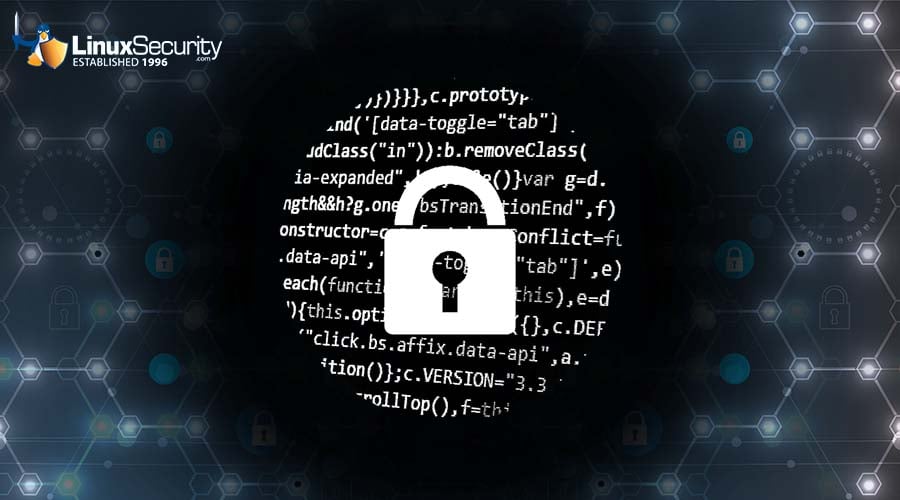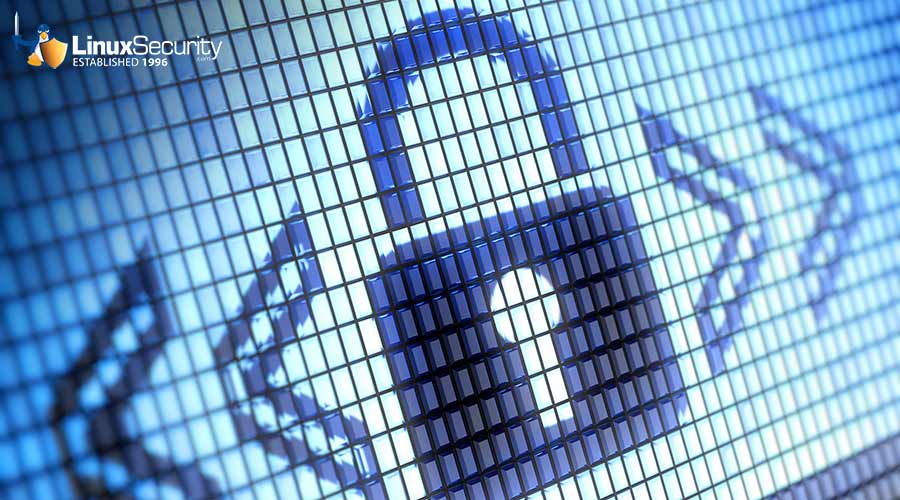-----BEGIN PGP SIGNED MESSAGE-----
______________________________________________________________________________
SUSE Security Announcement
Package: kernel
Announcement-ID: SUSE-SA:2004:037
Date: Wednesday, Oct 20th 2004 18:00 MEST
Affected products: 9.1
SUSE Linux Enterprise Server 9
Vulnerability Type: remote denial of service
Severity (1-10): 9
SUSE default package: yes
Cross References: CAN-2004-0816
CAN-2004-0887
Content of this advisory:
1) security vulnerability resolved:
- remote system crash with enabled firewall
- local root exploit on the S/390 platform
- minor /proc information leaks
problem description
2) solution/workaround
3) special instructions and notes
4) package location and checksums
5) pending vulnerabilities, solutions, workarounds:
- libtiff
- cyrus-sasl
- php4
- zinf
______________________________________________________________________________
1) problem description, brief discussion
An integer underflow problem in the iptables firewall logging rules
can allow a remote attacker to crash the machine by using a handcrafted
IP packet. This attack is only possible with firewalling enabled.
We would like to thank Richard Hart for reporting the problem.
This problem has already been fixed in the 2.6.8 upstream Linux kernel,
this update contains a backport of the fix.
Products running a 2.4 kernel are not affected.
Mitre has assigned the CVE ID CAN-2004-0816 for this problem.
Additionaly Martin Schwidefsky of IBM found an incorrectly handled
privileged instruction which can lead to a local user gaining
root user privileges.
This only affects the SUSE Linux Enterprise Server 9 on the S/390
platform and has been assigned CVE ID CAN-2004-0887.
Additionaly the following non-security bugs were fixed:
- Two CD burning problems.
- USB 2.0 stability problems under high load on SMP systems.
- Several SUSE Linux Enterprise Server issues.
(see the Maintenance Information Mail for more informations).
2) solution/workaround
If you are not using an iptables based firewall (like SUSEfirewall2)
on your system, you are not affected.
If you are using a firewall, a workaround is to disable firewall
logging of IP and TCP options.
We recommend to update the kernel.
3) special instructions and notes
SPECIAL INSTALL INSTRUCTIONS:
============================= The following paragraphs will guide you through the installation
process in a step-by-step fashion. The character sequence "****"
marks the beginning of a new paragraph. In some cases, the steps
outlined in a particular paragraph may or may not be applicable
to your situation.
Therefore, please make sure to read through all of the steps below
before attempting any of these procedures.
All of the commands that need to be executed are required to be
run as the superuser (root). Each step relies on the steps before
it to complete successfully.
**** Step 1: Determine the needed kernel type
Please use the following command to find the kernel type that is
installed on your system:
rpm -qf /boot/vmlinuz
Following are the possible kernel types (disregard the version and
build number following the name separated by the "-" character)
kernel-64k-pagesize
kernel-bigsmp
kernel-default
kernel-smp
**** Step 2: Download the package for your system
Please download the kernel RPM package for your distribution with the
name as indicated by Step 1. The list of all kernel rpm packages is
appended below. Note: The kernel-source package does not
contain a binary kernel in bootable form. Instead, it contains the
sources that the binary kernel rpm packages are created from. It can be
used by administrators who have decided to build their own kernel.
Since the kernel-source.rpm is an installable (compiled) package that
contains sources for the linux kernel, it is not the source RPM for
the kernel RPM binary packages.
The kernel RPM binary packages for the distributions can be found at the
locations below .
9.1/rpm/i586
After downloading the kernel RPM package for your system, you should
verify the authenticity of the kernel rpm package using the methods as
listed in section 3) of each SUSE Security Announcement.
**** Step 3: Installing your kernel rpm package
Install the rpm package that you have downloaded in Steps 3 or 4 with
the command
rpm -Uhv --nodeps --force
where is the name of the rpm package that you downloaded.
Warning: After performing this step, your system will likely not be
able to boot if the following steps have not been fully
followed.
**** Step 4: configuring and creating the initrd
The initrd is a ramdisk that is loaded into the memory of your
system together with the kernel boot image by the bootloader. The
kernel uses the content of this ramdisk to execute commands that must
be run before the kernel can mount its actual root filesystem. It is
usually used to initialize SCSI drivers or NIC drivers for diskless
operation.
The variable INITRD_MODULES in /etc/sysconfig/kernel determines
which kernel modules will be loaded in the initrd before the kernel
has mounted its actual root filesystem. The variable should contain
your SCSI adapter (if any) or filesystem driver modules.
With the installation of the new kernel, the initrd has to be
re-packed with the update kernel modules. Please run the command
mk_initrd
as root to create a new init ramdisk (initrd) for your system.
On SuSE Linux 8.1 and later, this is done automatically when the
RPM is installed.
**** Step 5: bootloader
If you run a SUSE LINUX 8.x, SLES8, or SUSE LINUX 9.x system, there
are two options:
Depending on your software configuration, you have either the lilo
bootloader or the grub bootloader installed and initialized on your
system.
The grub bootloader does not require any further actions to be
performed after the new kernel images have been moved in place by the
rpm Update command.
If you have a lilo bootloader installed and initialized, then the lilo
program must be run as root. Use the command
grep LOADER_TYPE /etc/sysconfig/bootloader
to find out which boot loader is configured. If it is lilo, then you
must run the lilo command as root. If grub is listed, then your system
does not require any bootloader initialization.
Warning: An improperly installed bootloader may render your system
unbootable.
**** Step 6: reboot
If all of the steps above have been successfully completed on your
system, then the new kernel including the kernel modules and the
initrd should be ready to boot. The system needs to be rebooted for
the changes to become active. Please make sure that all steps have
completed, then reboot using the command
shutdown -r now
or
init 6
Your system should now shut down and reboot with the new kernel.
4) package location and checksums
Please download the update package for your distribution and verify its
integrity by the methods listed in section 3) of this announcement.
Then, install the package using the command "rpm -Fhv file.rpm" to apply
the update.
Our maintenance customers are being notified individually. The packages
are being offered to install from the maintenance web.
x86 Platform:
SUSE Linux 9.1:
735f99730442772d0caeb1043576da0e
9.1/rpm/i586/kernel-smp-2.6.5-7.111.i586.rpm
8e38495a90203fdeef0167126e9699fd
9.1/rpm/i586/kernel-bigsmp-2.6.5-7.111.i586.rpm
54474a313ff90c5a5ded8cd3590016ee
source rpm(s):
9.1/rpm/src/kernel-default-2.6.5-7.111.nosrc.rpm
60a46f48bbae6989a50d2b3c735cd176
5bc77692dc82521b83378c97d39acd72
9.1/rpm/src/kernel-bigsmp-2.6.5-7.111.nosrc.rpm
348c5d63b8c26c548d8b5bfcc894b805
x86-64 Platform:
SUSE Linux 9.1:
53ec1285f8933f79b6e53f2cb4d2094a
de3bf18c94d26a2b3477cf11cf723380
source rpm(s):
3e6123bd50f2802cf6a96ccfa2af674f
365354d9e91032e53436f949da6ae8f6
______________________________________________________________________________
5) Pending vulnerabilities in SUSE Distributions and Workarounds:
libtiff
- Several buffer and integer overflows have been found in the
image handling library libtiff by Chris Evans and Dmitry Levin,
recorded under CVE Ids: CAN-2004-0803,CAN-2004-0804,CAN-2004-0886.
We are working on updates and will release them within the
next days.
cyrus-sasl
- The SASL_PATH environment variable was also used to load
plugins even with setuid privileges set, which can lead to a
local root privilege escalation.
The default SUSE installation was not found to be affected
by this problem, neithertheless we are in the process of
releasing updates. The CVE ID for this issue is: CAN-2004-0884
php4
- File overwrite problems were identified in php4. We have
released updates for this issue.
However, due to problems with php4-recode in combination with
php4-mysql we had to withdraw the update from YaST2
Online Update for some SUSE Linux versions.
New packages will be available soon.
zinf
- A tempfile race condition in zinf / freeamp was fixed, packages
are available.
phpMyAdmin
- A bug in phpMyAdmin that would allow users to execute
arbitrary commands has been discovered. New packages will be
available soon.
mysql
- Several bugs in mysql have been discovered. New packages
will be available soon.
libpng
- The issues with libpng described in CAN-2004-0954 and
CAN-2004-0955 where already fixed in the last libpng update.
Fixed packages are therefore already available on our ftp
server.
______________________________________________________________________________
6) standard appendix: authenticity verification, additional information
- Package authenticity verification:
SUSE update packages are available on many mirror ftp servers all over
the world. While this service is being considered valuable and important
to the free and open source software community, many users wish to be
sure about the origin of the package and its content before installing
the package. There are two verification methods that can be used
independently from each other to prove the authenticity of a downloaded
file or rpm package:
1) md5sums as provided in the (cryptographically signed) announcement.
2) using the internal gpg signatures of the rpm package.
1) execute the command
md5sum
after you downloaded the file from a SUSE ftp server or its mirrors.
Then, compare the resulting md5sum with the one that is listed in the
announcement. Since the announcement containing the checksums is
cryptographically signed (usually using the key security@suse.de),
the checksums show proof of the authenticity of the package.
We disrecommend to subscribe to security lists which cause the
email message containing the announcement to be modified so that
the signature does not match after transport through the mailing
list software.
Downsides: You must be able to verify the authenticity of the
announcement in the first place. If RPM packages are being rebuilt
and a new version of a package is published on the ftp server, all
md5 sums for the files are useless.
2) rpm package signatures provide an easy way to verify the authenticity
of an rpm package. Use the command
rpm -v --checksig
to verify the signature of the package, where is the
filename of the rpm package that you have downloaded. Of course,
package authenticity verification can only target an un-installed rpm
package file.
Prerequisites:
a) gpg is installed
b) The package is signed using a certain key. The public part of this
key must be installed by the gpg program in the directory
~/.gnupg/ under the user's home directory who performs the
signature verification (usually root). You can import the key
that is used by SUSE in rpm packages for SUSE Linux by saving
this announcement to a file ("announcement.txt") and
running the command (do "su -" to be root):
gpg --batch; gpg < announcement.txt | gpg --import
SUSE Linux distributions version 7.1 and thereafter install the
key "build@suse.de" upon installation or upgrade, provided that
the package gpg is installed. The file containing the public key
is placed at the top-level directory of the first CD (pubring.gpg)
and at .
- SUSE runs two security mailing lists to which any interested party may
subscribe:
suse-security@suse.com
- general/linux/SUSE security discussion.
All SUSE security announcements are sent to this list.
To subscribe, send an email to
.
suse-security-announce@suse.com
- SUSE's announce-only mailing list.
Only SUSE's security announcements are sent to this list.
To subscribe, send an email to
.
For general information or the frequently asked questions (faq)
send mail to:
or
respectively.
==================================================================== SUSE's security contact is or .
The public key is listed below.
====================================================================


























